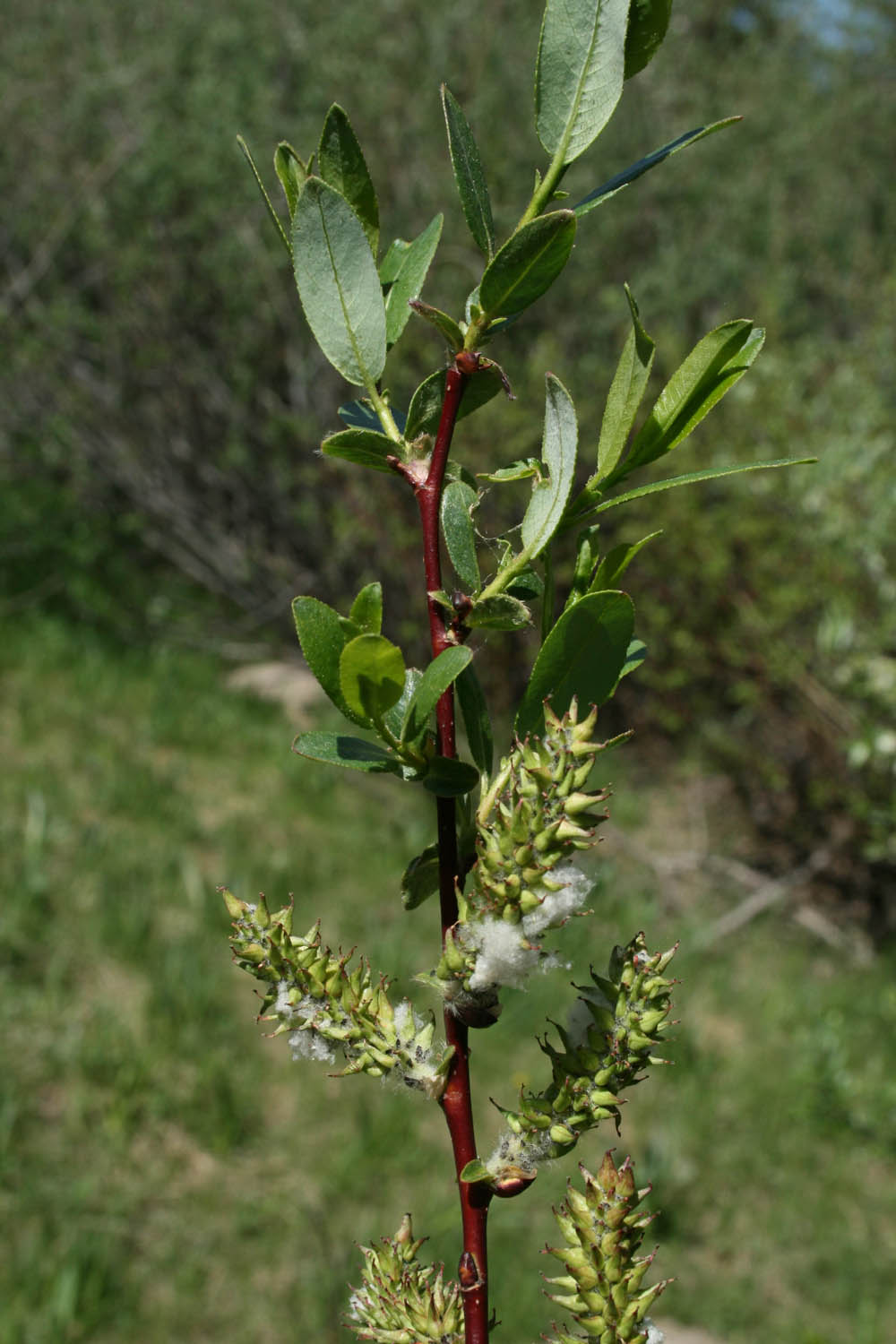Salicaceae
|
Salicaceae |
|
|
Shrubs or trees, heterophyllous or not, sometimes clonal, forming clones by root shoots, rhizomes, layering, or stem fragmentation; glabrous or glabrescent to pubescent; branching monopodial or sympodial. Stems erect to pendent; branched. Leaves persistent, deciduous or marcescent, alternate (opposite or subopposite in Salix purpurea), spirally arranged, simple; stipules present or not; petiole present; blade margins toothed or entire, sometimes glandular. Peduncles present or absent. Inflorescences racemose or spicate, usually catkins, unbranched, sometimes fasciculate or racemelike cymes, flowering before or as leaves emerge or year-round; floral bract (1) subtending each flower, displaced onto pedicel or distinct, scalelike, apex entire, toothed, or laciniate; bract subtending pistillate flower deciduous or persistent. Pedicels present or absent. Flowers usually unisexual, sometimes bisexual, usually staminate and pistillate on different plants; sepals present or absent, or perianth modified into 1 or 2 nectaries, or a non-nectariferous disc; stamens 1-60(-70); filaments distinct or connate basally, slender; anthers longitudinally dehiscent; ovary 1, 2-7[-10]-carpellate, 1-7[-10]-locular; placentation usually parietal, sometimes axile on intruded, fused placentae; ovules 1-25 per ovary; style 1 per carpel, distinct or connate; stigmas 2-4, truncate, notched-capitate, or 2- or 3-lobed. Fruits capsular, baccate, or drupaceous. Seeds sometimes surrounded by arillate coma of relatively long, silky hairs; endosperm scant or absent. PLANT: Dioecious, deciduous trees and shrubs. LEAVES: alternate, simple, stipulate, usually serrate, the teeth tipped by minute glands, the stipules sometimes suppressed. INFLORESCENCE: bracteate catkins, the staminate falling after anthesis, the pistillate persisting until seed release. FLOWERS: without a perianth; stamens 2-80; pistils 2-4-carpelled, unilocular, the placentae parietal, the ovary superior. FRUITS: valvately dehiscent capsules. SEEDS: with long, cottony hairs. NOTES: 2-3 genera, over 500 spp., chiefly boreal and temperate, as pioneers in moist habitats of the N Hemisphere. REFERENCES: Eckenwalder, James E. 1992. Salicaceae. Ariz.-Nev. Acad. Sci. 26(1)2. |
|
